Table of Contents
Guide
 InspiredStar Block Quiltsby Sandy Berg
InspiredStar Block Quiltsby Sandy Berg Landauer Publishing
(www.landauerpub.com) is an imprint of Fox Chapel Publishing Company, Inc. Copyright 2019 by Sandy Berg and Fox Chapel Publishing Company, Inc., 903 Square Street, Mount Joy, PA 17552. Project Team: Vice PresidentContent: Christopher Reggio Editors: Laurel Albright/Sue Voegtlin Copy Editor: Katie Ocasio Designer: Laurel Albright Photographer: Sue Voegtlin Print ISBN: 978-1-947163-17-1
eISBN: 978-1-607657-08-8 All rights reserved. No part of this book may be reproduced, stored in a retrieval system, or transmitted in any form or by any means, electronic, mechanical, photocopying, recording, or otherwise, without the prior written permission of Fox Chapel Publishing, except for the inclusion of brief quotations in an acknowledged review and the enlargement of the template patterns in this book for personal use only. The patterns themselves, however, are not to be duplicated for resale or distribution under any circumstances. Any such copying is a violation of copyright law.
Note to Professional Copy Services: The publisher grants you permission to make up to ten copies for any purchaser of this book who states the copies are for personal use. For a printable PDF of the patterns used in this book, please contact Fox Chapel Publishing at , quoting the ISBN and title of this book, as well as the pattern or patterns required. The Cataloging-in-Publication Data is on file with the Library of Congress. We are always looking for talented authors. To submit an idea, please send a brief inquiry to acquisitions@foxchapelpublishing.com. Contents Stars and quilts go together like so many other iconic duos.
Stars and quilts go together like so many other iconic duos.
Stars have long played an important part in quilts because of their varietythey go from simple to very complex and everything in between. There are stars to suit every quilters ability and purpose, from easy stars like a Variable Star or Friendship Star to the fancier versions like Lone Stars or Feathered stars. They are a universal image that needs no explanation. They pair easily with other blocks and design images and they can have different meanings to everyone. They can represent everything from nature in a glorious night sky to patriotic feelings at the raising of a flag. Sandy Before we get going, I have some thoughts concerning tools and products used in quiltmaking. Sandy
Before we get going, I have some thoughts concerning tools and products used in quiltmaking. Sandy Before we get going, I have some thoughts concerning tools and products used in quiltmaking.
Before we get going, I have some thoughts concerning tools and products used in quiltmaking.
My best advice is to get to know the products you intend to use before using them in a project. Read the labels and test the products. This really applies to everything you will use in quiltmaking! Knowing what you are using and how to use it properly will give you much better results. As with many specialized areas, quilting has a lot of common terms and abbreviations. For your reference, here are some abbreviations that are used in these patterns. WOF = Width of FabricA cut of fabric that goes from one selvage to the selvage on the opposite side. RST = Right Sides TogetherIn sewing two pieces of fabric together, you place them with the right side of the fabrics facing one another.
WST = Wrong Sides TogetherIn sewing two pieces of fabric together, you place them with the wrong side of the fabrics facing one another. HST = Half Square TriangleThis is a unit that is made from two triangles of fabric sewn together diagonally. QST = Quarter Square TriangleThis is a unit that is made from four 90 triangles of fabric sewn together diagonally. SS = Strip SetThis is the result of sewing two or more strips of fabric together. The strips are usually cut the width of the fabric (from selvage to selvage). After sewing these together, they are then cut apart in measured sections.
WOF = width of fabric Sew with a " (0.64cm) seam unless specified otherwise  Todays quilt fabrics are usually from 42" to 45" (1 to 1.15m) wide on the bolt. The patterns in this book assume 40" (1.02m) of usable fabric after removing the selvages, and the projects in this book are designed to use 100% cotton fabrics. Before cutting pieces for your quilt, there are a few things I recommend doing. Remove the selvages from the fabric. This means taking off anywhere from " to " (1.27 to 1.91cm) of fabric from the edges. Once you remove the selvages, you have a little less fabric to use for piecing.
Todays quilt fabrics are usually from 42" to 45" (1 to 1.15m) wide on the bolt. The patterns in this book assume 40" (1.02m) of usable fabric after removing the selvages, and the projects in this book are designed to use 100% cotton fabrics. Before cutting pieces for your quilt, there are a few things I recommend doing. Remove the selvages from the fabric. This means taking off anywhere from " to " (1.27 to 1.91cm) of fabric from the edges. Once you remove the selvages, you have a little less fabric to use for piecing.
Pre-washing and protecting against color bleeding are not required, but it may save you heartache and disappointment later when/if you need to launder a completed project. Pre-washing, while not absolutely necessary, has its advantages. Washing and drying your fabric will take care of any shrinkage and it will remove any excess dye that may remain in your fabric. Taking care of these two concerns at the beginning will alleviate the issues after youve completed your project and laundered it for the first time. No need to worry about color-fastness or shrinkage! An alternative to pre-washing your fabric is to test for color-fastness. Its a good idea when your fabric has a strong color, such as reds, deep purples, greens, or blues.
Place a small piece of fabric in very hot water for about 15 minutes. If no color has bled into the water, you can consider it color-fast. If the color has transferred to the water, you know that this fabric will bleed when it gets wet. You can set the color in your fabric by using a laundry product that actually catches the color that may come out of your fabric. Quilt shops may carry a product used to set dyes, as well. Whether you are new to quiltmaking or you are an experienced quilter, do your research on battings. Wall hangings will probably never be washed.
On the other hand, a quilt that will be used as a covering will need to be laundered at some point. Batting comes in many different sizes and thickness, and different fiber content plays a huge roll in making a right choice for your project. Be sure to read the instructions on the batting to see if it is appropriate for the method of quilting you have chosen. On the label for the batting, you will find useful information such as how far apart the quilting should be, how much the batting will shrink when washed, and whether it is good for hand quilting or machine quilting. There will be some shrinkage in the batting when you wash your project, so it will have a different appearance after washing. To see what your completed project may look like after it is washed, make up two quilted samples with your batting choice.
Leave one unwashed, and machine wash and dry the other sample. Mark each test sample with the name of the batting, its fiber content, and whether it has been washed or not. Keep a collection of batting samples so youll be able to choose the right batting for your future projects. 

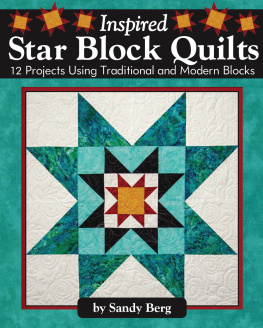
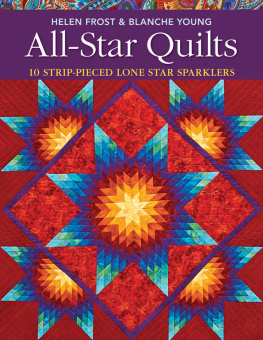
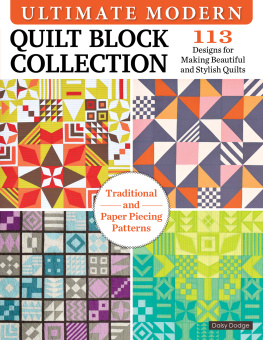
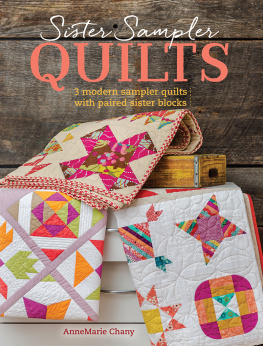
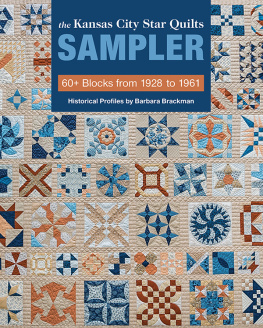
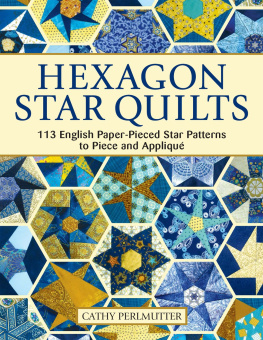

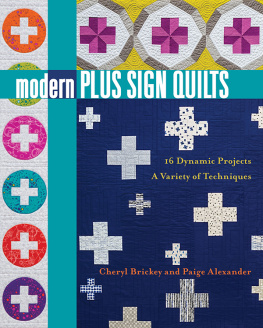
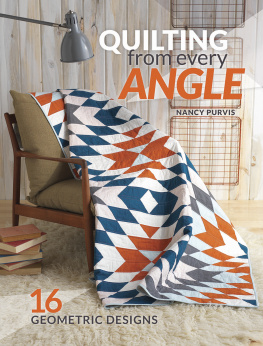
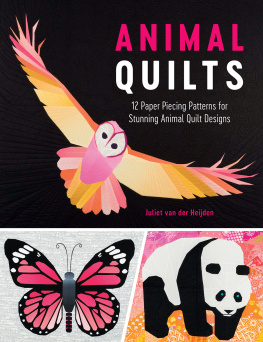
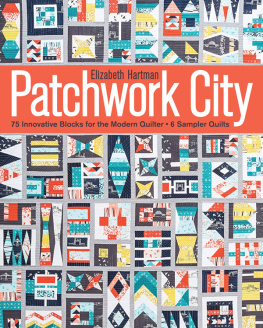

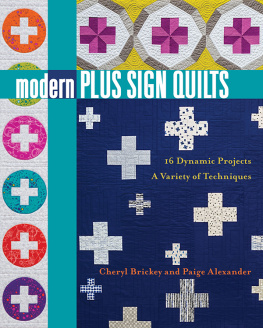

 InspiredStar Block Quiltsby Sandy Berg Landauer Publishing (www.landauerpub.com) is an imprint of Fox Chapel Publishing Company, Inc. Copyright 2019 by Sandy Berg and Fox Chapel Publishing Company, Inc., 903 Square Street, Mount Joy, PA 17552. Project Team: Vice PresidentContent: Christopher Reggio Editors: Laurel Albright/Sue Voegtlin Copy Editor: Katie Ocasio Designer: Laurel Albright Photographer: Sue Voegtlin Print ISBN: 978-1-947163-17-1
InspiredStar Block Quiltsby Sandy Berg Landauer Publishing (www.landauerpub.com) is an imprint of Fox Chapel Publishing Company, Inc. Copyright 2019 by Sandy Berg and Fox Chapel Publishing Company, Inc., 903 Square Street, Mount Joy, PA 17552. Project Team: Vice PresidentContent: Christopher Reggio Editors: Laurel Albright/Sue Voegtlin Copy Editor: Katie Ocasio Designer: Laurel Albright Photographer: Sue Voegtlin Print ISBN: 978-1-947163-17-1 Stars and quilts go together like so many other iconic duos.
Stars and quilts go together like so many other iconic duos. Before we get going, I have some thoughts concerning tools and products used in quiltmaking. Sandy
Before we get going, I have some thoughts concerning tools and products used in quiltmaking. Sandy Todays quilt fabrics are usually from 42" to 45" (1 to 1.15m) wide on the bolt. The patterns in this book assume 40" (1.02m) of usable fabric after removing the selvages, and the projects in this book are designed to use 100% cotton fabrics. Before cutting pieces for your quilt, there are a few things I recommend doing. Remove the selvages from the fabric. This means taking off anywhere from " to " (1.27 to 1.91cm) of fabric from the edges. Once you remove the selvages, you have a little less fabric to use for piecing.
Todays quilt fabrics are usually from 42" to 45" (1 to 1.15m) wide on the bolt. The patterns in this book assume 40" (1.02m) of usable fabric after removing the selvages, and the projects in this book are designed to use 100% cotton fabrics. Before cutting pieces for your quilt, there are a few things I recommend doing. Remove the selvages from the fabric. This means taking off anywhere from " to " (1.27 to 1.91cm) of fabric from the edges. Once you remove the selvages, you have a little less fabric to use for piecing.